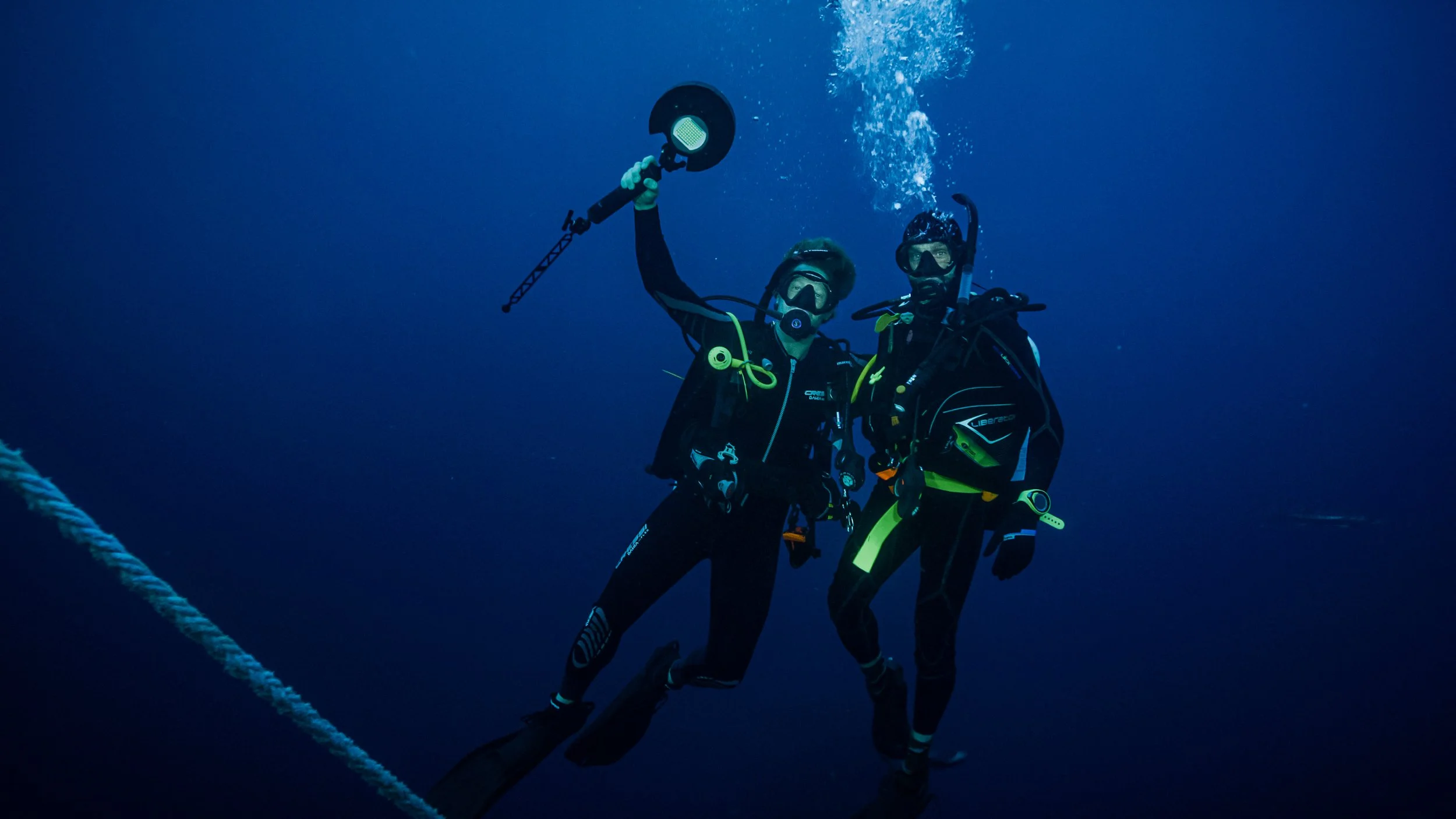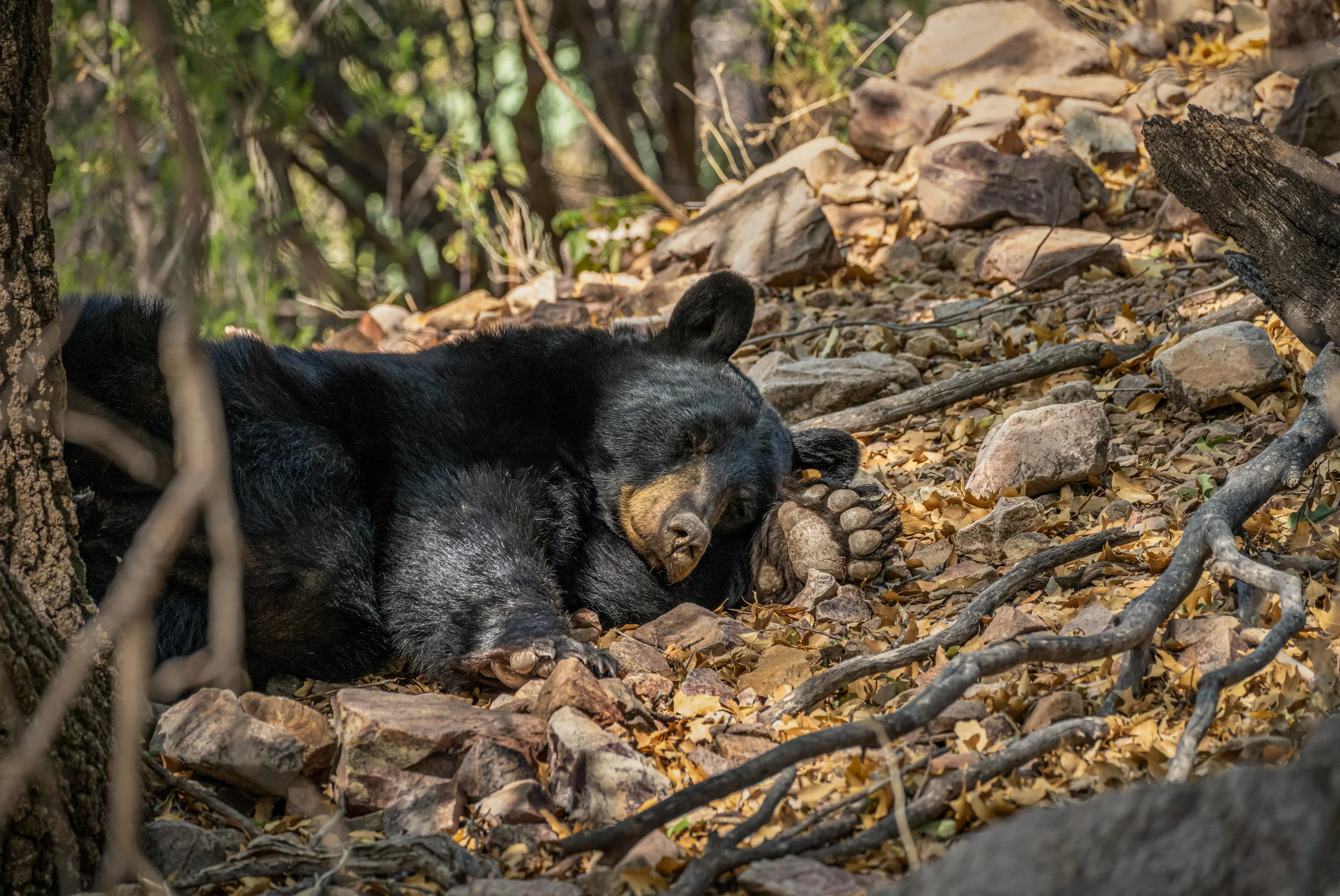A Texas Wildlife Story: Writer/Director Ben Masters Talks ‘Deep in the Heart’
Images courtesy of Fin & Fur Films
by CHAD KENNERK
Deep in the Heart celebrates the diverse Texas landscape and the state’s remarkable array of wildlife. Written and Directed by Ben Masters and Narrated by Matthew McConaughey, the film aims to conserve wild places and to illustrate the importance of conservation.
In Conversation with Writer/Director Ben Masters
Film Review (FR): How did this project begin for you?
Ben Masters (BM): I studied wildlife biology at Texas A&M and graduated 10 years ago. Ever since then, I've been doing short films for different conservation organisations and research institutes. I've always really loved Texas wildlife. There was a series that came out three years ago called Our Planet that really interwove a lot of the human element of wildlife conservation into wildlife behaviours. That was the blueprint. I was just finishing up my last feature film, which is called The River and the Wall, and I'd been wanting to do a Texas natural history film for decades. I put together a team of Katy Baldock and Jay Kleberg as producers, and we launched the film. Now it’s finally out, and I’m really proud of how it turned out.
(FR): Do you feel that your journey in Unbranded (2015) and the experience making The River and the Wall (2019), prepared you to set out on this adventure?
(BM): Absolutely, they certainly did. Primarily, I know how to suffer outside for a really long period of time and thoroughly enjoy it.
(FR): What was the shoot like on this film? You coordinated multiple cinematographers and created a consistent look throughout with DP Skip Hobbie.
(BM): You know, every species is different. For example, the mountain lions took us over a year to get. The ocelots took over a year to get with all the camera trapping. It was really about getting a very thorough understanding of the animal's behaviour and getting different scientists and researchers to help us understand what was possible from a filming perspective. Then to get Skip, the different shooters, and myself to go out and make sure to get the establishing shots, all the critical components to put a sequence together. Each storyline required a different strategy in the filming.
Cinematographers Austin Alvarado & Shannon Vandivier in Caprock Canyons State Park, North Texas
Caprock Canyons State Park
(FR): What were some of the things that you learned in the time it took to capture some of this remarkable footage?
(BM): Having an understanding of the animal's behaviour is the number one skill set that you must have. Having a good understanding of the cameras—that’s something that can be learned—but having a good understanding of wildlife is the number one critical thing in filming wildlife. And relying on researchers, ranchers, or the people that live with them every day, that was the most critical thing.
(FR): What did your process of crafting a narrative from the footage look like? Did it often present itself? Or was there more fine tuning involved in putting a sequence together?
(BM): Before we went into filming any sequence, we had a vision for what we wanted to get. We developed a shot list for that vision. It had a narration and a goal of what we were trying to capture. And nature is just full of surprises. We would bring footage back into the editing room and adapt the narration and story from what we originally envisioned to what we were able to capture. For example, with the ocelots, our original idea for that footage was to say, ‘Hey, we have ocelots here, look how beautiful they are’. And it turned into, ‘Oh my God, there’s some kittens.’ There was definitely a vision for the movie from the very beginning, but there was also a lot of adapting to the powerful images that we were able to acquire in the field.
(FR): What were some of the other big surprises?
(BM): The three-legged bear. That was a gut punch, because we just got done filming a beautiful bear sequence in the Chisos mountains in Big Bend National Park. To leave that mountain range and then to find this bear that recently chewed its leg off to get out of a trap. That one was really tough and completely unexpected. You could never write that into the script. We felt obligated to the audience and to ourselves to tell that story. Even though it was a difficult one to watch, that's what we captured.
(FR): How did you capture that footage? What equipment was involved in the film?
(BM): We developed a somewhat homemade kit of camera traps that are made by a guy named Nick Turner, based in the UK. It has a Panasonic GH5s body inside of it and its got these security laser beams, so that whenever the beam breaks, it sends a signal to the camera, telling it to turn on. It lives inside a pelican case and we would just go in and change batteries every 12 days. We did that for years. We had long lenses with RED cameras, we had some DJI drones, some underwater cameras that we made and custom rigged to control underwater through a coaxial cable with Wi-Fi. There was a lot of adapting of cameras to get the shot, whatever each sequence required. We used our money and our equipment the best that we could.
Director Ben Masters & Cinematographer Austin Alvarado in Central Texas.
Director Ben Masters & Producer Jay Kleberg in the Gulf of Mexico.
(FR): It's a gorgeous film from start to finish. What was the process like going through all the footage? How often were you looking through what you've captured and setting aside footage to put toward the film?
(BM): We would go out and acquire footage, and then organise it by species, by date, by behaviour. Then our assistant editor, Juli Keller, would make select reels that we would look through and see what different ideas would pop-up from a storyline perspective. Then we would write down scripts, record them, put a picture to them, put some music together, and see what we had in the can. That would give us some direction of what we still needed to get. There were many shoots where we would go out and shoot everything, bring it back, and be like, ‘Oh my gosh, we didn't get the shot of the river when it’s dry.’ That was the benefit of being based in Texas. We live here and have the ability to go out and get these reshoots. A lot of natural history filmmakers don't have that luxury. It's a lot more expensive to go to the Arctic and get that shot that you needed for the polar bears. We definitely had a home court advantage in that regard.
(FR): The passion for Texas and for your home really comes through. What about the state of Texas draws you to continue telling stories there?
(BM): It’s my home. I feel like the stories that we're telling can hopefully help make where I live a better place. I feel like that’s a worthy thing to do.
(FR): You found the ideal narrator for the film, how did Matthew McConaughey get involved?
(BM): I wish I had a better story for this. I honestly just Googled his agent and called him on the telephone. I told him what we were doing and sent over a rough cut. Matthew was like, ‘Heck yeah, this is awesome. Let's do it. What day do you want to do it on?’ We locked in a date and he delivered the whole movie in four hours. It was just a beautiful performance. He was really wonderful to work with.
(FR): Film really creates the opportunity to speak through images. What do you hope audiences will take away?
(BM): I hope that the Texas audience finds a newfound respect and love for our state. An appreciation of the wildlife and how protected ecosystems work. I hope they learn from it and that they care about it. I hope that caring about it leads people to get involved in some of the conservation organisations around the state. I hope that leads into some policy and that some of our policymakers who may not have ever had the opportunity to spend a lot of time outside or to understand how Texas works—I hope they can watch it and learn from it and care about it and love it and protect it and conserve it. That's what I want out of the movie, for it to have some impact on the ground for the wildlife.
Director Ben Masters in South Texas
Black Bear
(FR): How can Texans and Non-Texans alike get involved?
(BM): We have to take action page on our website that has ways to sign your support to help out mountain lions or to get involved in ocelot recovery or to find ways to support bison herds on public lands. Later on this summer, and into next year, we're going to be releasing the film into K through 12 curriculum for educators to show kids the wonders of ocelots, mountain lions, and blind catfish. We’re trying to get as much good out of the out of movie as we can.
(FR): There are a lot of great resources on the Deep in the Heart website. You've written a coffee table book as well.
(BM): We did, yeah, there was no way we could put everything into the movie. So we wrote a book as we were creating the film, that dives deeper into some of the different wildlife issues and behaviours that we were researching on the film. It’s a more in-depth resource than the movie is.
(FR): What's next for you? Are there more Texas stories that you'd like to tell?
(BM): Oh yeah, we've got an ocelot film that's coming out in November of this year called American Ocelots on PBS. We're looking at doing more feature length wildlife movies similar to Deep in the Heart. We're definitely just getting started. We’ve got a really amazing team here in Austin with lots of passion, lots of dedication. There's so many important stories to be told.
Ben Masters is a filmmaker and writer specialising in wildlife and adventure stories. He is best known for directing the feature-length documentary The River and The Wall (SXSW 2019 award winner) and for producing Unbranded (Mountainfilm 2015 Audience Award winner). Masters studied wildlife biology at Texas A&M University and founded Fin and Fur Films, a production company specialising in short films featuring wildlife research, conservation, and activism. He is the author of two books published by Texas A&M University Press and has written for National Geographic and Western Horseman. His films have been distributed on Netflix, National Geographic, STARZ, PBS, and he has worked with The Wildlife Society, Borderlands Research Institute, YETI, Texas Parks and Wildlife Foundation, and other brands and NGOs. A proud Texan, Masters loves riding a good horse through new country, filming wildlife stories that haven’t been documented before, and using movies to help conserve wildlife and wild places.
Learn more and take action: https://deepintheheartwildlife.com/








